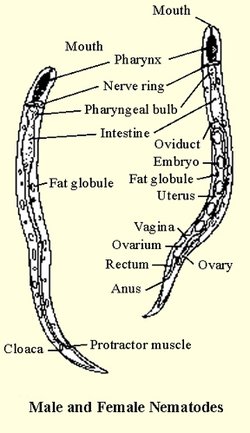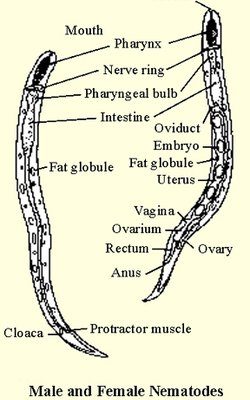
Vinegar eels, scientifically known as *Turbatrix aceti*, are closely linked to the fermentation process. You might find them living in vinegar or even in the remnants of fruit juice blending. While they’re harmless and intriguing to observe, distinguishing them from other similar organisms can be tricky. So let’s dive into some common field identification challenges and learn how to make spotting a vinegar eel a little easier.
Understanding the Basics of Vinegar Eels
Before we tackle identification, it’s helpful to know what vinegar eels actually are. These microscopic nematodes thrive in environments where acetic acid is present. This means they’re often found in fermented liquids, such as vinegars, where they play a role in breaking down organic matter. Within the vinegar, they might look like tiny wriggling threads, which is why the untrained eye can easily confuse them with other species.
One of the biggest challenges in identifying vinegar eels is their size. Measuring just about 1 to 2 millimeters in length, these transparent, elongated worms are often overlooked in murky waters or cluttered environments. It’s almost like searching for a needle in a haystack—only the needle is squirming and the hay is a bunch of different worm-like creatures!
Additionally, vinegar eels have a unique, undulating swimming motion. If you’re paying attention, you might notice their smooth, snake-like movement. This characteristic can help you differentiate them from other tiny organisms. However, if you’re not familiar with the species, it might just look like another wiggly worm.
Common Confusions: Look-Alike Species
You might be wondering why spotting a vinegar eel can become so complicated. One reason is that several other tiny organisms inhabit similar environments, making it easy to mix them up.
- Other Nematodes: There are many different types of nematodes, and while vinegar eels are specifically associated with vinegar, you might come across other nematodes in similar habitats. Some can look just as slender and might even wiggle in a similar fashion.
- Worms: Certain small worms can be mistaken for vinegar eels because of their translucent bodies. They can also inhabit similar aquatic environments, which adds another layer to the identification process.
- Protozoa: In some cases, tiny protozoa can also appear in similar habitats. Though they’re not worms, their movement might catch your eye and confuse your identification.
To accurately identify a vinegar eel, you’ll need to closely observe its physical characteristics and swimming pattern. Remember, patience is key—take your time and don’t rush through the spotting process.
Habitats and Conditions Favoring Vinegar Eels
Identifying a vinegar eel also involves understanding where they thrive. These little guys often inhabit environments rich in organic material. When searching for vinegar eels, you should keep an eye out for:
- Fermentation Sites: Vinegar eels love places where fermentation is happening. This means you could find them in old jars of vinegar or even in the sludge of composted organic matter.
- Warm Temperatures: Generally, vinegar eels prefer warmer temperatures. So if you’re in a cooler climate or during winter, your chances of spotting them decrease significantly.
- Adequate Oxygen Levels: Like many organisms, vinegar eels need oxygen. So, if the water source is stagnant or low in oxygen, the odds of finding them sharply diminish.
Being aware of these factors can help you narrow down your search. Knowing where to look allows you to focus your efforts and increases your chances of encountering these unique creatures.
Using the Right Tools for Identification
When it comes to spotting vinegar eels, the right tools can make all the difference! You wouldn’t try to fix a car without the proper tools, and the same goes for identifying vinegar eels.
For starters, a magnifying glass or a simple handheld microscope can help you get a better view of these tiny creatures. With a magnifier, you can observe their shape, movement, and unique features more closely. Honestly, it’s like putting on a pair of superhero glasses that enhance your ability to see the underwater world.
Additionally, having a small sampling kit is helpful. This can include:
– Small containers for collecting samples
– A dropper to transfer liquid
– Clear vials to store any specimens you want to take home
If you’re like me, you enjoy documenting your findings. Taking photos through a microscope can help you confirm your identification later. Plus, it feels awesome to capture the beauty of these little creatures!
The Role of Environment in Identification
Another essential factor is the specific environment you’re exploring. Vinegar eels tend to flourish in certain ecosystems. If you know what these habitats look like, you can refine your search. Here’s what to consider:
– Water Quality: Clear water is often a good sign. Pollution or high turbidity can disrupt the ecosystems vinegar eels thrive in. Look for clean sources, like flowing streams or properly managed aquariums.
– Other Organisms: If you notice plenty of organic debris, that’s a good sign that vinegar eels might be nearby. Healthy ecosystems often host a range of life forms, which increases your chances of spotting these tiny worm-like creatures.
Being mindful of the environmental conditions can help you better understand where to look and what to expect. It’s like having a cheat sheet for your adventure!
When to Spot Vinegar Eels: Timing Matters
Timing can play a crucial role in successfully spotting vinegar eels. These nematodes are more active at certain times of the year and day, and knowing when to look can help you.
– Spring and Summer: Vinegar eels thrive in warmer months. If you’re setting out to spot them, aim for the late spring through summer. During this period, their populations are typically at their peak.
– Time of Day: Early morning or late afternoon can be ideal for spotting vinegar eels. During these times, you might catch them more active and swimming about, rather than hiding or stationary.
Being aware of when to conduct your search can enhance your probability of spotting these fascinating little creatures. After all, it’s not just about where you look but also when!
Identifying vinegar eels in the wild can be a fun, rewarding experience—but it does require patience and practice. While you might face challenges, understanding their habitats, look-alike species, and the right tools to use will set you on the path to success.
Remember, you’re not just searching for a tiny nematode; you’re diving into a unique aspect of the natural world. So, grab your magnifying glass and equipment, and head out with a sense of wonder. Who knows what tiny treasures you’ll discover while exploring!

